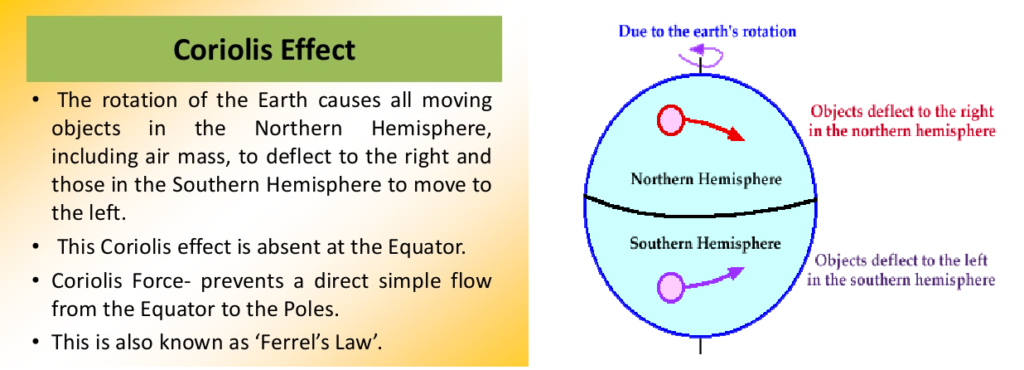JOIN OUR WHATSAPP GROUP. CLICK HERE
What is the impact of Coriolis force and latent heat in the development of tropical cyclones
What is the impact of Coriolis force and latent heat in the development of tropical cyclones On this page, we examine the role that latent heat and coriolis force play in the formation of tropical cyclones. Latent heat and coriolis force are both necessary for the development of tropical cyclones. We will examine their role in the development of tropical cyclones in the sections below.
The Coriolis forces in the development of tropical cyclones

The Coriolis effect is the effect of the earth’s rotation on horizontally moving bodies such as the wind and ocean currents. Such bodies tend to be deflected to the right in the northern hemisphere (clockwise) and to the left in the southern hemisphere (counterclockwise). The amount by which the object is deflected depends on its speed and latitude. For a more in-depth explanation of this force and a very effective animated demonstration of its effect, look at the University of Iowa Coriolis page.
The Coriolis force has a different effect on high pressure systems than it does on low pressure systems. You might want to search for an illustration to examine the direction that winds will blow around a low pressure system (called a cyclone) and a high pressure system (called an anticyclone). Would a cyclone in the northern hemisphere blow in the same direction as a cyclone in the southern hemisphere? Why or why not?
Latent Heat in the development of tropical cyclones

Tropical cyclones are characterized and driven by the release of large amounts of latent heat of condensation as moist air is carried upwards and its water vapor condenses. This heat is distributed vertically, around the centre of the storm. Thus, at any given altitude (except close to the surface where water temperature dictates air temperature) the environment inside the cyclone is warmer than its outer surroundings.
How to Pass Geography Grade 11 with distinctions
One of the most significant accomplishments in your academic career is passing matric. It provides access to a wide range of post secondary options and employment possibilities. Use our best study advice to complete your matriculation, and you’ll succeed with flying colors.
- Attend class
- Ask questions
- Make notes
- Study
- Practise
- Study groups
- Extra class
- Motivation
- Complete assessments
- Prepare for the Exams in due time
Download Past Exam Papers & Memo per Province
- Department of Basic Education Grade 9 Exams
- Eastern Cape Papers and Memorandum
- Free State Papers and Memorandum
- Gauteng Papers and Memorandum
- KwaZulu-Natal Papers and Memorandum
- Limpopo Papers and Memorandum
- Mpumalanga Papers and Memorandum
- Northern Cape Papers and Memorandum
- North West Papers and Memorandum
- Western Cape Papers and Memorandum
JOIN OUR TELEGRAM CHANNEL. CLICK HERE

Be the first to comment